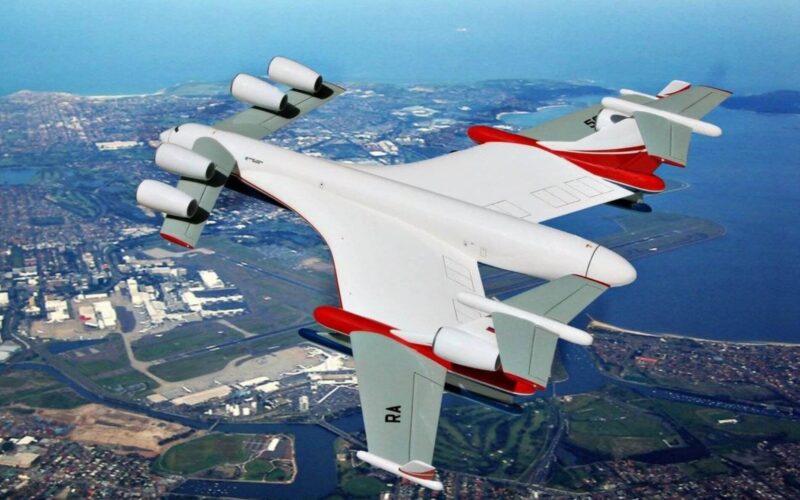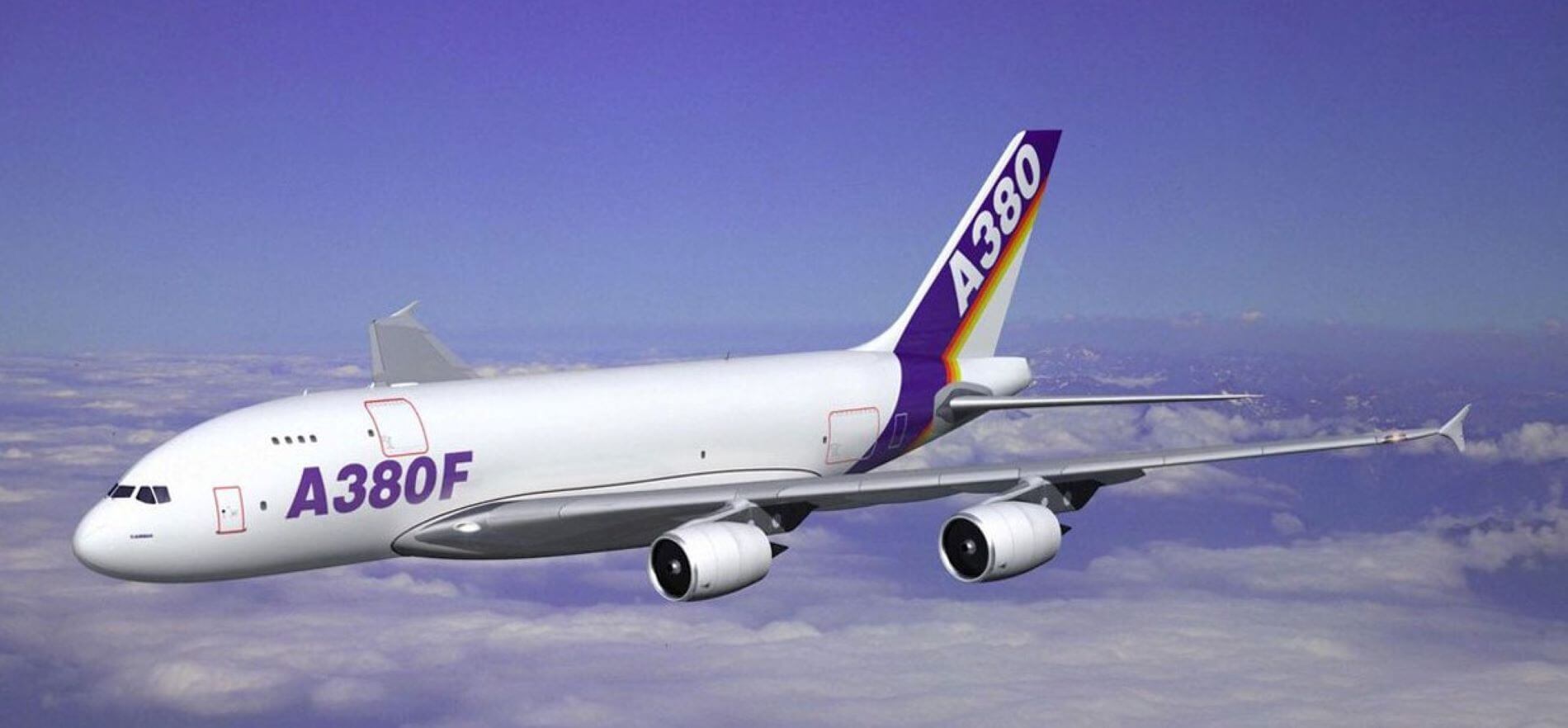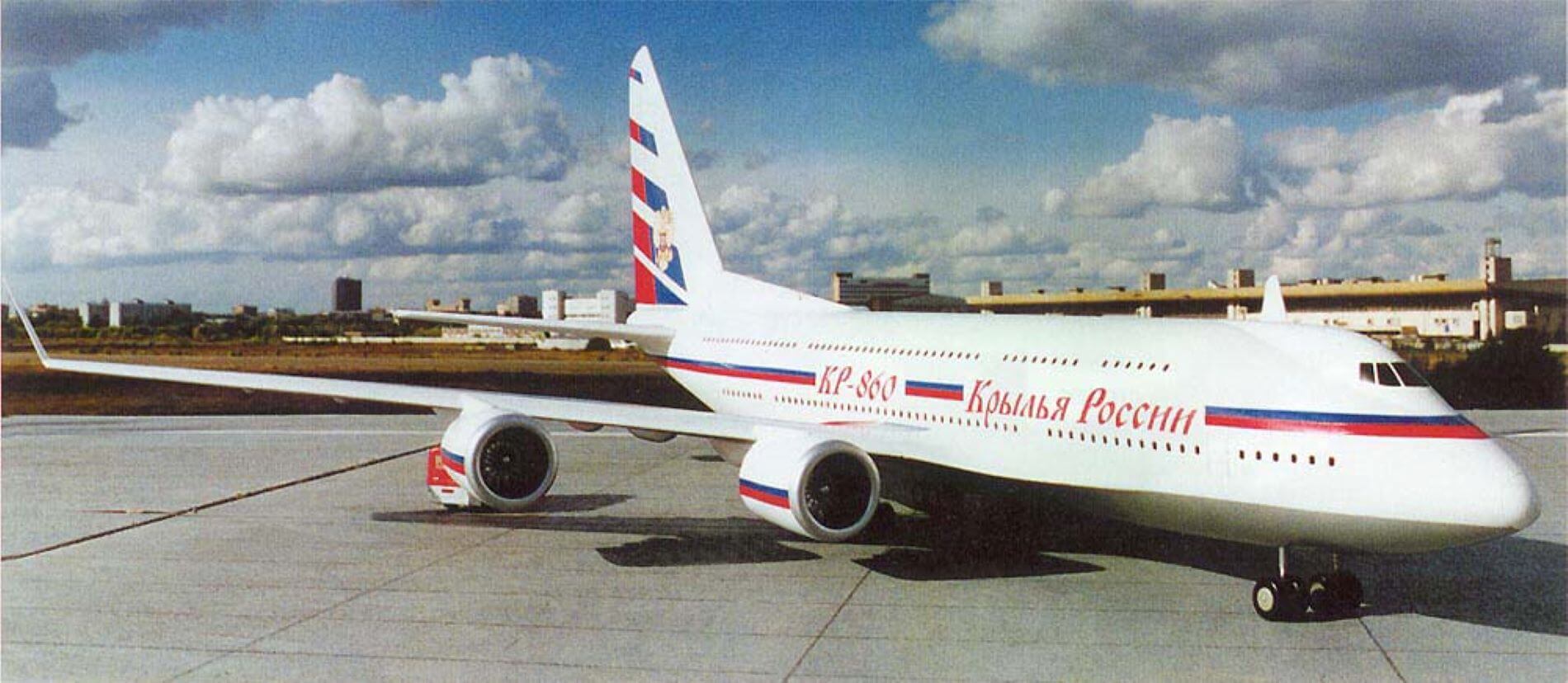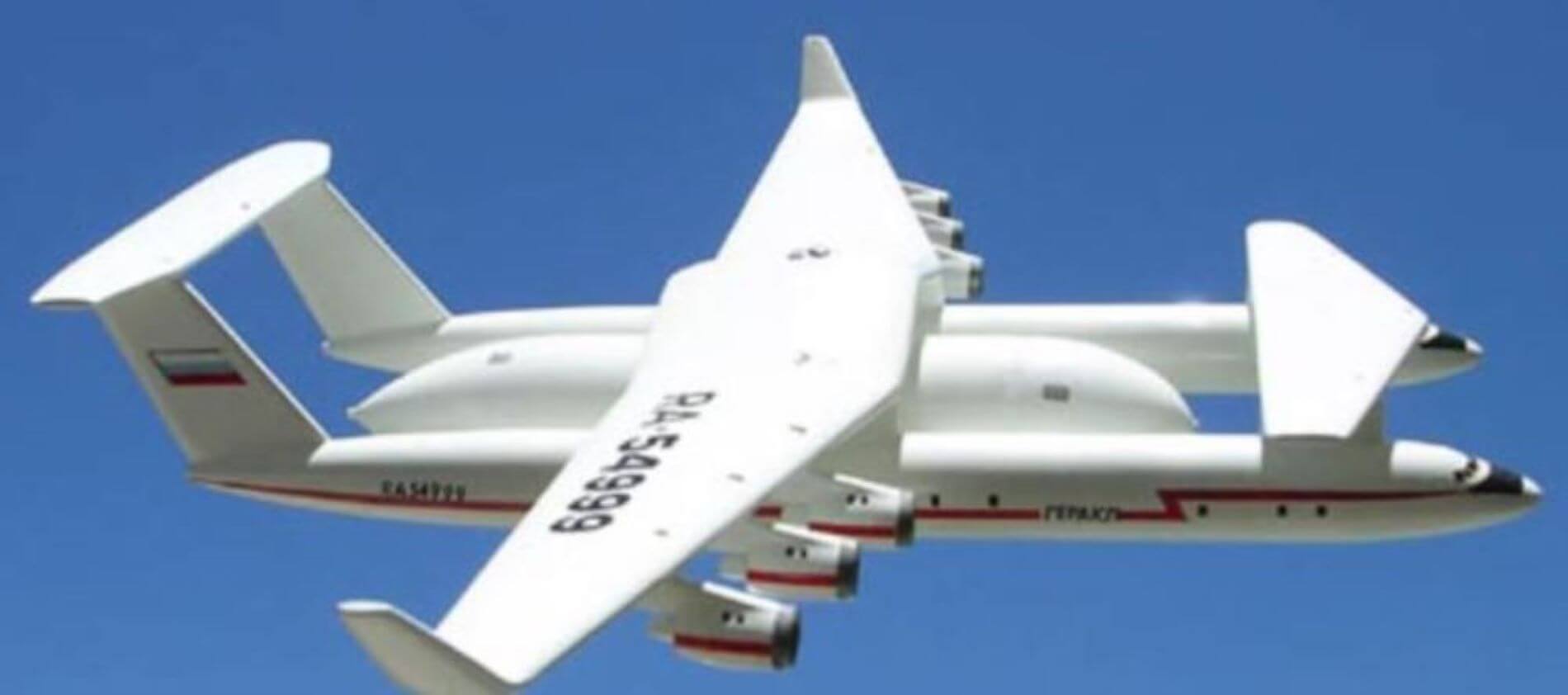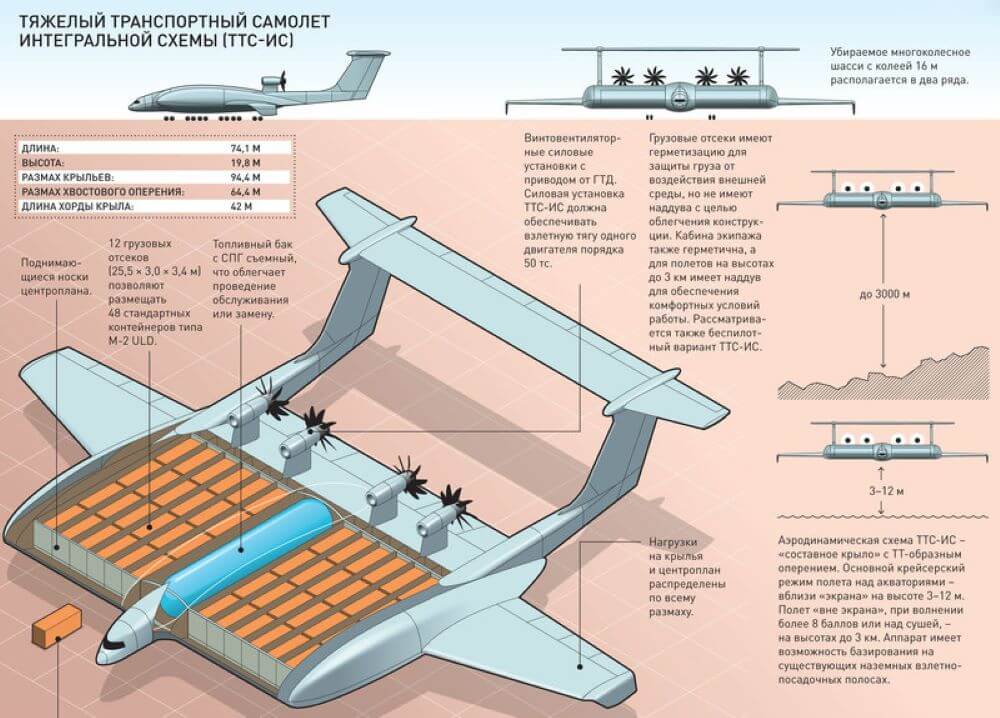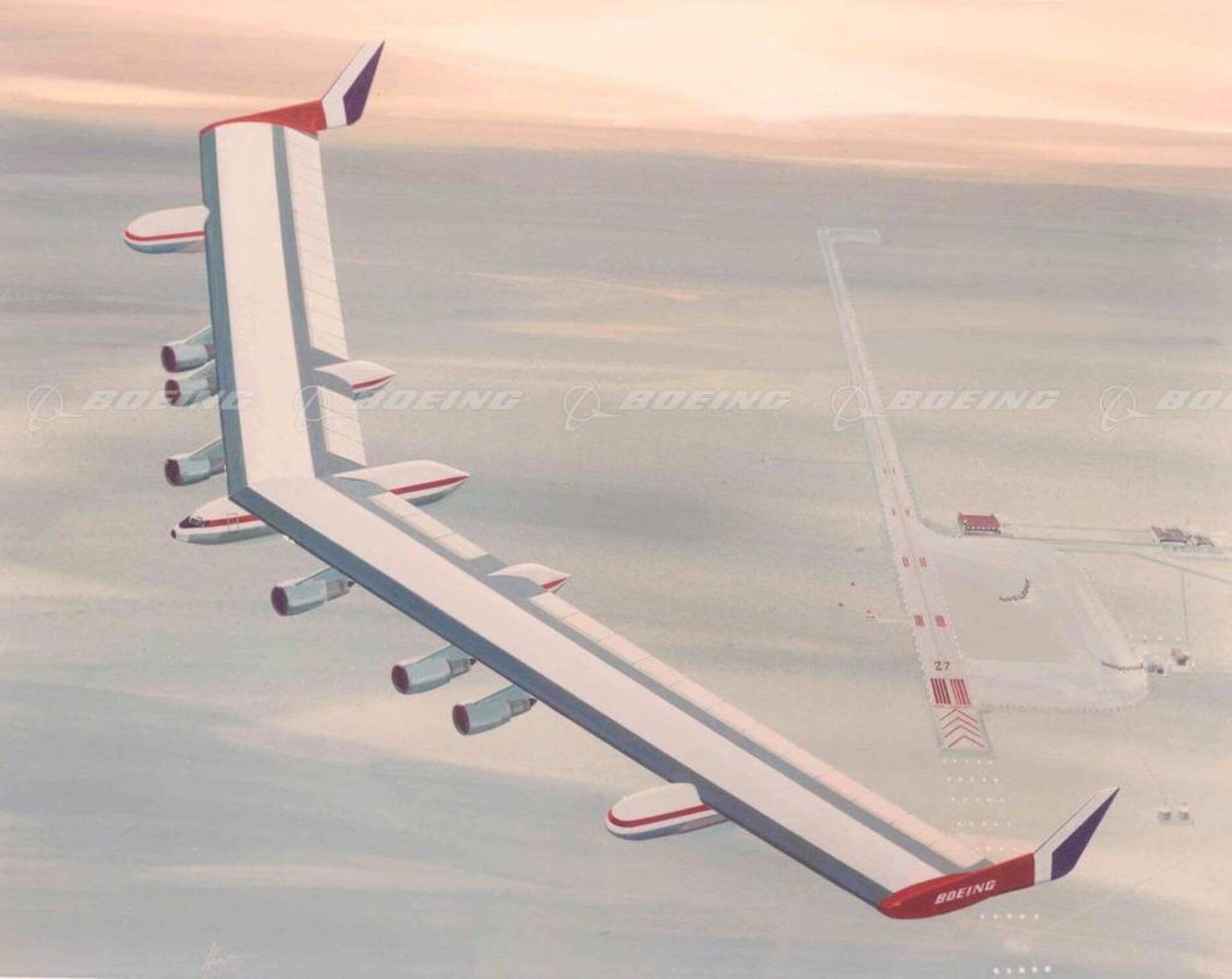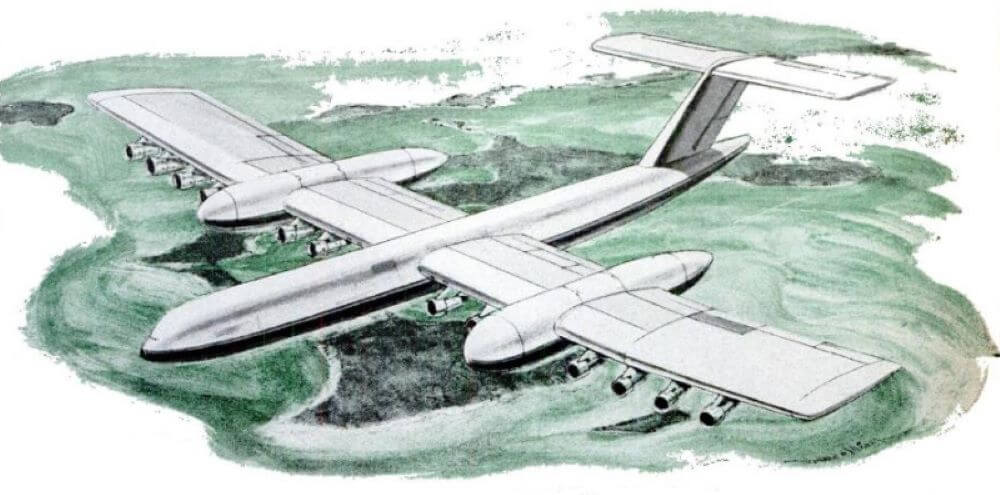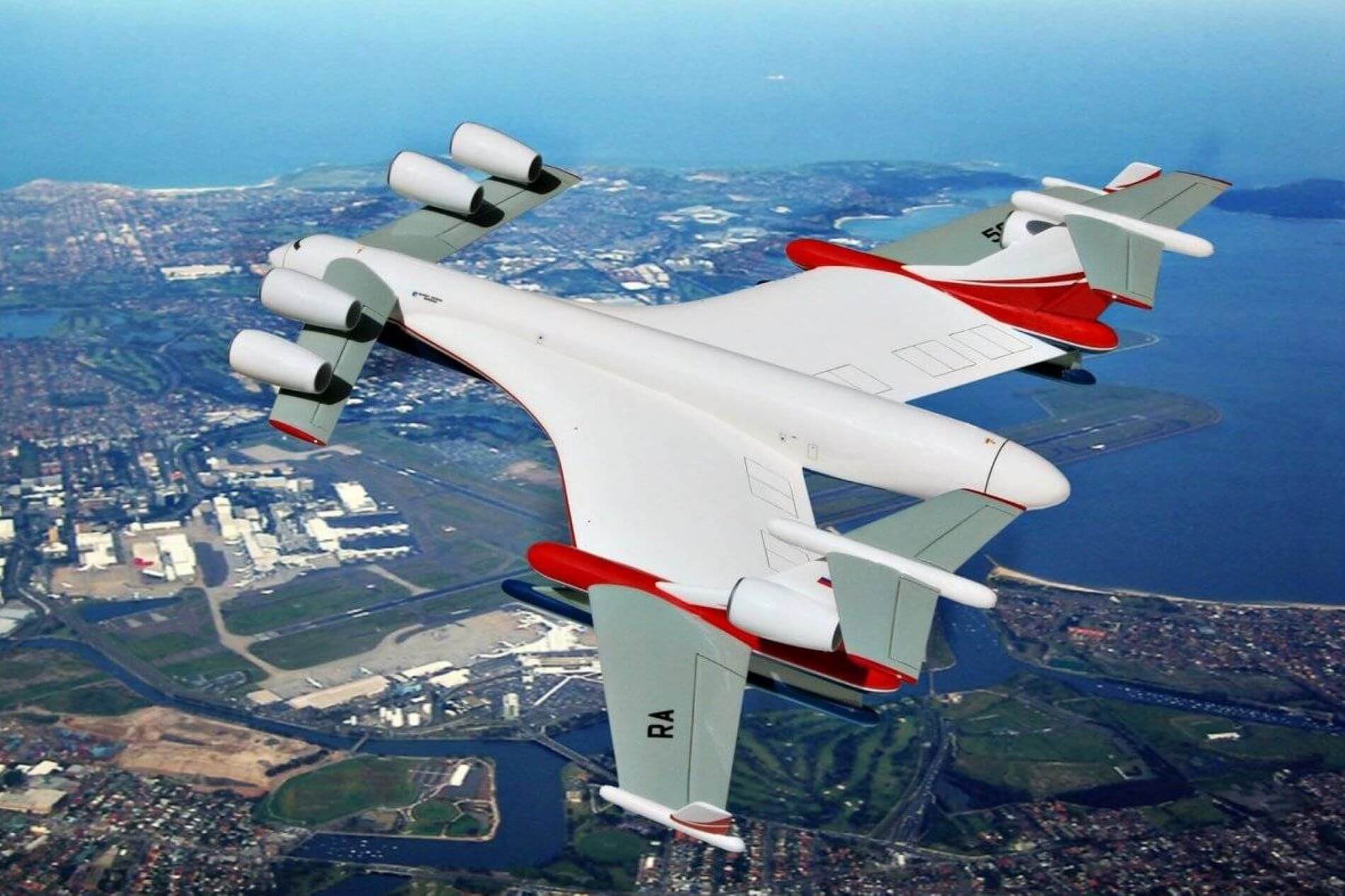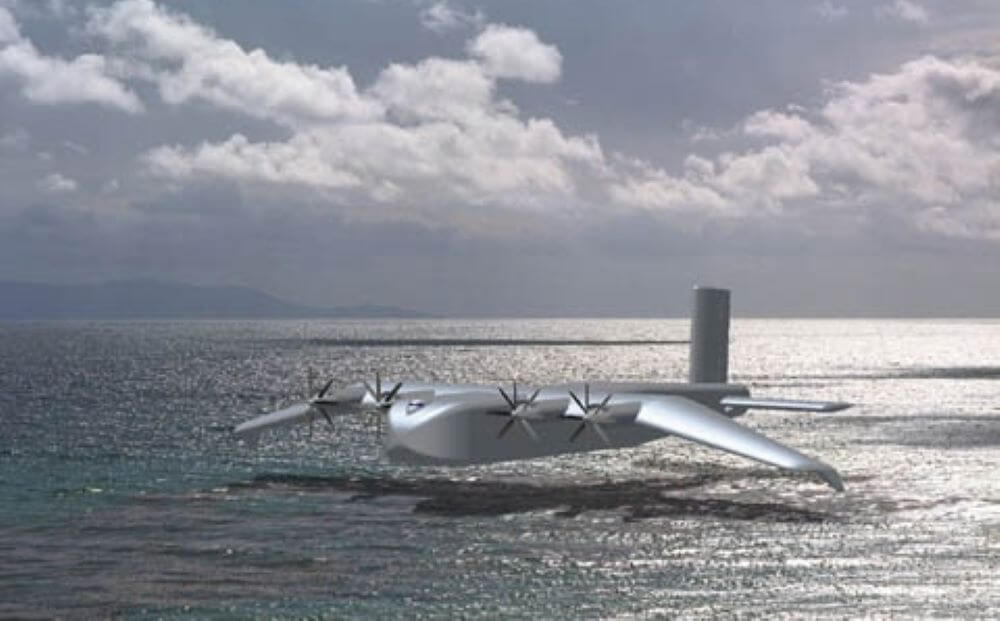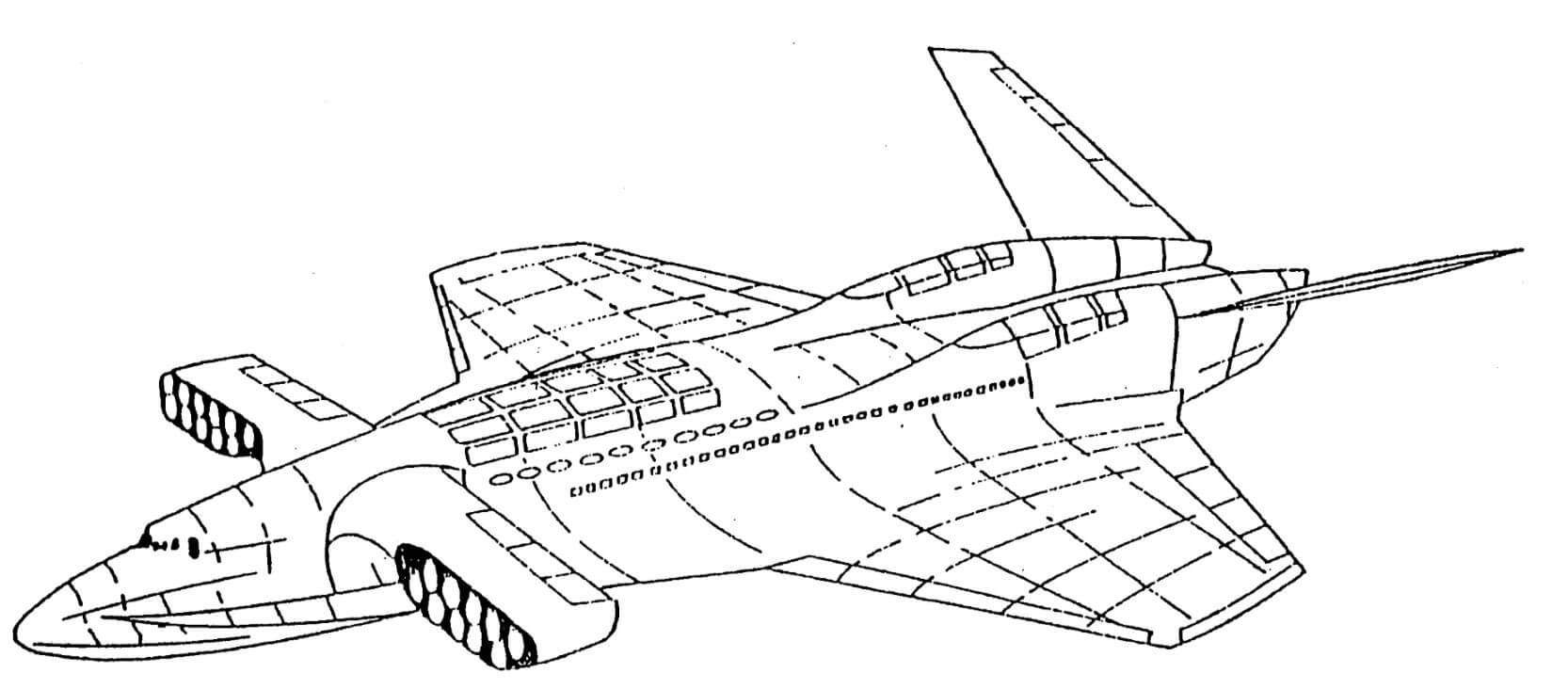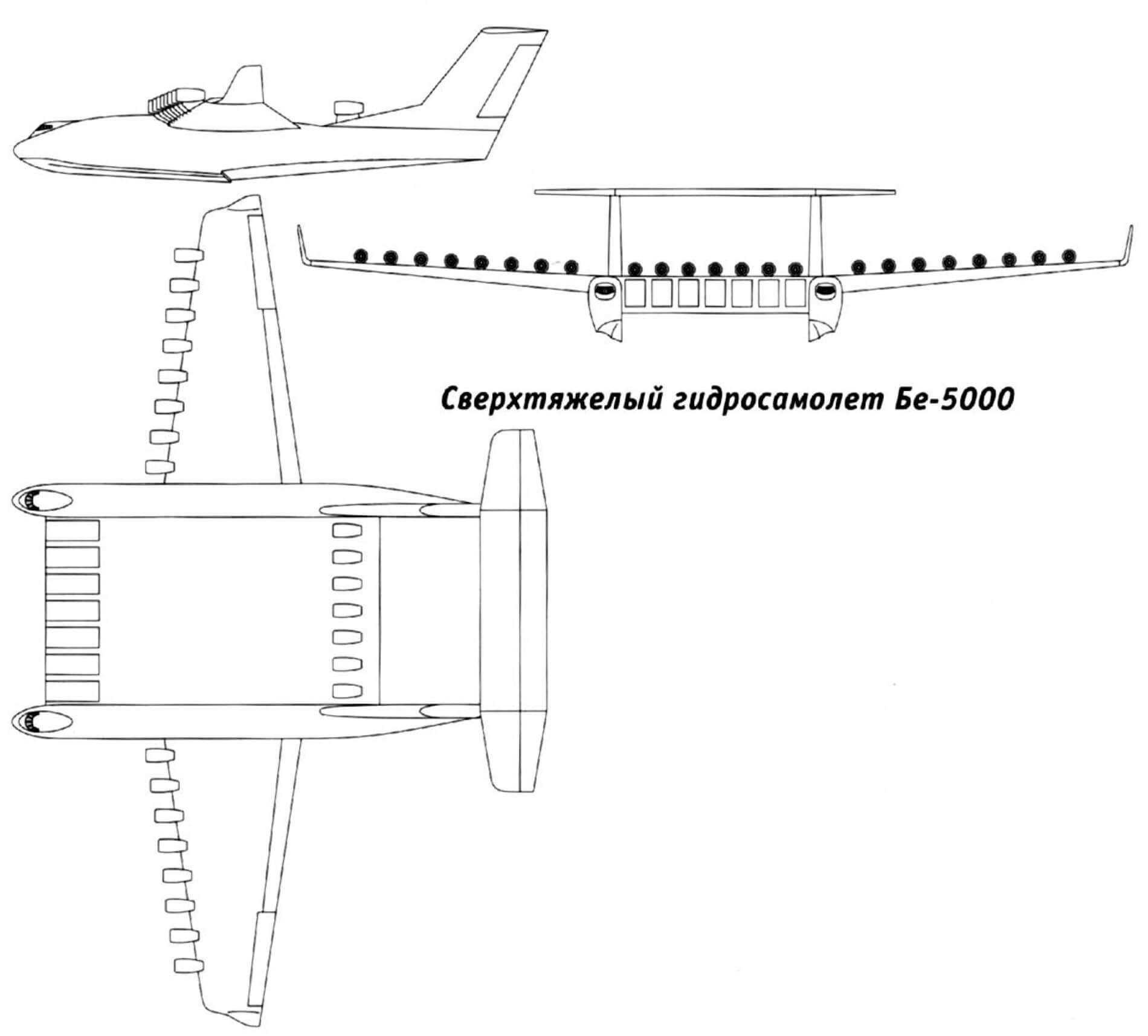Freighters are some of the most impressive airplanes flying today. But as always, the most striking ones never left the drawing board. Let’s look at several unrealized transport aircraft projects that, had the situation been just a bit more beneficial, could have been hauling cargo in the skies today.
The criteria is simple: the bigger the payload capacity, the higher slot on the list. Just like with our 10 largest passenger airplanes, an aircraft must have been in a design phase in order to avoid fictional ones.
Also, a question of “what constitutes an aircraft” becomes rather relevant in some of these, as many heaviest freighters were designed to use wing-in-ground (WIG) effect: an air cushion which forms below the wing as an aircraft flies near the ground, increasing lift.
Such machines – also called ground-effect vehicles, wingships or ekranoplans – often can be considered as a cross between a ship and an airplane. Nevertheless, all of them can fly, some – even land on runways. Also, most of the ones contained within this list were designed to be able to fly at higher altitudes, albeit with smaller payloads. Thus, from here downwards, all WIG vehicles are considered aircraft.
All the payload weights below are in metric tons.
Honorable mention. Airbus A380F: 150 t.
An early concept drawing (Image: Airbus)
Before we lose a touch with reality, let’s briefly discuss the project which came closest to be realized. When Airbus designed their A380 (the largest passenger airplane to ever fly), they intended it to have a freighter version, capable of carrying 150 tonnes (330,000 lb) of cargo. Despite some initial interest from FedEx and UPS, it never attracted actual orders – mostly due to complicated double-decker design, high price, and a combination of other factors.
In mid-2020, it was reported that Lufthansa Technik intended to start converting passenger A380s into freighters. That may eventually happen, but since Airbus announced stopping their A380 production, it is quite certain that true A380F is destined to never be built.
By the way, the aforementioned payload capacity of 150 tonnes was intended for regular, non-enlarged aircraft. Had it been successful, Airbus would have pursued the development of further modifications with bigger fuselage and upgraded engines, something like A380-900F or A380-1000F, with even bigger capacities.
Semi-honorable mentions. Tupolev Tu-404 and Lockheed Martin VLST: 126 and 185 t.
Both of these were passenger aircraft projects intended to rival the Airbus A380 in the early 90s, yet were never realized. They had their freighter variants planned too.
Tupolev Tu-404, the largest passenger aircraft project ever, had two versions – a stranger one, called by the designers the ‘flying wing’, and the conventional one, a four-engine doubledecker. The first one, although its development reached a rather late stage, never had a freighter variant. The second one had though, with a planned payload capacity of 126 tonnes. Sadly, its blueprints or concept drawings are nowhere to be found.
Lockheed-Martin VLST had passenger, freighter and combi versions present in an initial pitch at the company, latter ones optimized to carry regular shipping containers. Despite smaller size and passenger capacity than the Tu-404, it would have been able to lift more cargo. Interestingly, this stupendously large aircraft was rather tame in comparison with all the super-heavy freighter projects developed by Lockheed-Martin at the time. Spoiler alert: the company is going to have a rather heavy presence on this list.
10. Sukhoi KR-860: 300 t.
A model of four-engined passenger KR-860. Imagine it with double the engines and no windows (Image: Testpilot.ru)
Sukhoi’s answer to the A380 from the late 90s would have had passenger capacity between 860 and 1000 seats and a well thought out provision for cargo version. The goal was to transport goods between China and Europe through Russian airspace cheaper than by sea or train. As such, the airplane would have had a cargo door in the nose and cargo bay optimized for regular shipping containers, putting speed and efficiency above anything else.
According to the promotional material, while the passenger version was planned with four A380’s GP7000 engines, the freighter would have been propelled by eight Aviadvigatel PS-90s. Serious doubts about an advertised ability to lift 300 tonnes of cargo can be raised there, as in such configuration the aircraft would have less power, while being heavier and having less wing area than A380. Quite possibly, had KR-860 freighter ever been built, its actual characteristics would have been decidedly less impressive.
9. Molnyia-1000 Heracles: 450 t.
Concept drawings from the period are much more impressive than this model though (Image: Alternatehistory.co.uk)
A spiritual successor to the Antonov An-225 Mriya, the Heracles was designed by Molnyia, a team behind the Soviet space shuttle Buran. It was intended to carry the next generation of spaceplanes, both for transport and aerial launch.
Similar in concept to the Scaled Composites Stratolaunch, the Molnyia-1000 would have had twin fuselages, but being a triplane, would not require advanced materials to manufacture. Thus, an additional use as a transport plane was envisioned, with an ingenious method to make a loading procedure extremely fast: a detachable cargo module would have been suspended between the fuselages, simple to detach and replace. It could have housed almost twice the Mriya’s payload, or resembled a fuselage of a passenger plane with over 1200 seats.
“The introduction of Heracles base transport system will make the same revolution in the air transportation as the wide use of containers has made on the railway and water transport,” Molnya’s brochure from the mid-90s claims.
8. TsAGI TTS-IS: 500 t.
Part of a promotional brochure presented at MAKS-2017 airshow (Image: TsAGI)
Everybody knows the giant Soviet ekranoplans. Recently, there were attempts to resurrect the concept, with Russian Central Aerodynamic Institute (TsAGI) taking on the development of the Heavy Transport Aircraft of Integrated Circuit (HTA-IC). The work started in 2014 and by 2018, several wind tunnel models were tested.
The aircraft is intended to carry 48 large aviation shipping containers (of M-2 size), and use liquefied natural gas (LNG) for fuel. With a smaller payload it could fly as a regular airplane, at the altitude of 3 kilometers (10,000 feet) above land. The WIG effect would be used for routes over sea.
It is safe to assume that even if this beast ever takes off, that day is still quite far away. The work on engines (the hardest part, as always) has not even started yet and there have been no updates on the project since 2018. Even if a commercial venture ever takes it over, it will encounter the same problems that stopped the development of transport WIG vehicles in the 80s: extreme cost, no infrastructure, and crucially – waves.
7. The Spanloaders: Up to 598 t.
Boeing’s spanloader (Model 759). Lockheed’s was bigger, but looked essentially the same (Image: Boeing)
In the mid-1970s NASA was investigating a concept of flying wing freighters. Boeing, Lockheed and McDonnel Douglas were invited to offer their suggestions, and in the end, a multitude of projects were created, each exploring a different variation of transport aircraft with cargo bays located within wings. McDonnel Douglas created moderately-sized D-3122; Boeing offered Model 759, with a payload capacity of 400 tonnes; Lockheed did not create a definitive variant. They simply called their concept “The Spanloader”, and it was supposed to carry 600 short tons (598 tonnes) of cargo.
In the end, the competition was cancelled, as all the projects – very similar in concept – had a number of unsolvable problems. The wing with a cargo bay inside would need either immense structural weight, or rows and rows of additional landing gears to survive a landing. The first solution would make the aircraft too heavy, the second one – unable to land at any airport. The third solution was briefly considered by Lockheed: to mount peripheral jet air cushions on the tips. It would make the aircraft semi-VTOL capable, but the cost would just go through the roof.
6. Boeing RC-1: 1000 t.
Almost a blown-up 747 (Image: Wikipedia)
One of the most ambitious transport infrastructure projects ever, the RC-1 was, quite literally, intended as a flying pipeline. A steady stream of massive airplanes would haul crude oil from the northern parts of Alaska or Canada, inaccessible by other means.
As the Trans-Alaska pipeline encountered problems in the early 70s, Boeing offered its help. Boeing 747s could be converted to fly between oil fields and refineries, but the cost of operations would be just a bit too big. Purpose-built airplane, optimized for larger capacities and shorter ranges could work, but it would have to be huge.
Thus, an aircraft was designed, with twice the size and the capacity than anything above on this list. With a wingspan of 146 meters (478 feet), twelve Pratt & Whitney JT9Ds (the Boeing 747 had four) and cargo pods the size of regional airliners, it would have needed airfields the size of cities. Had it actually been built and had the idea actually made economical sense. Unfortunately, in the end it still did not.
5. Beriev Be-2500: 1000 t.
Relatively recent concept drawing (Image: Beriev Aircraft Company)
Beriev, one of the less-known Soviet design bureaus, built a number of successful flying boats that still fly today. In the 70s, they started experimenting with WIG aircraft, designing and testing, among others, the odd-looking Bartini Beriev VVA-14.
Come the 90s, a family of transport ekranoplans of different sizes was envisioned, a direct continuation of their previous airplane models. Amongst them were the Be-800, the Be-1000, the Be-1500, the Be-2000, and yes, the Be-2500. The number in the designation is the intended takeoff weight of the aircraft, meaning that the smallest of the family would have been substantially larger than even the Antonov An-225. The Be-2500, the most impressive and the most publicized of them, supposedly powered by Rolls Royce Trents or something similar, would use existing seaport infrastructure and fly as a regular airplane if needed.
Yet, it would not even be the largest of the family.
4. Lockheed CL-1201: 1043 t.
Parasite fighters are docked under the wing, but there is a hangar in the underbelly as well. Just below the nuclear reactor (Image: Wearethemighty.com)
Yet another Lockheed project, just slightly larger than the Be-2500, but much, much crazier.
The primary use of this airplane would be to operate as an airborne aircraft carrier, housing a fleet of 24 fighter jets (possibly F-4 Phantoms). It would not have had a landing strip, but be about as large as one though, with the length of 170 meters (560 feet) and a wingspan of 341 meters (1120 feet). Oh, and it would have been nuclear powered. Did I mention that it was intended to be nuclear powered?
The onboard reactor would allow it to cruise at Mach 0.8 for 41 days. This capability would be much needed, as an idea of landing this machine somehow seems even more ludicrous than building it. Even with onboard lift jets providing some sort of STOL capability, whatever that would mean for this monstrosity.
For a version named Logistics support aircraft (LSA), a fleet of smaller transport planes would shuttle troops and cargo from the ground, and there was also an idea to use it as a mobile launch platform for ballistic missiles.
Although some aviation magazines at the time took this idea rather seriously, there are all indications that the military did not. It is unclear why: maybe for some budgetary concerns or maybe because of a possibility to contaminate half a continent after crashing one plane.
3. Boeing Pelican: 1270 t.
The Pelican in all the early-2000s CGI glory (Image: Boeing)
Possibly the best known project on this list, it was Boeing Phantom Works’ take on a WIG vehicle, revealed in the early 2000s. The initial reveal stated that its payload capacity was going to be 2,700 tonnes, but quite likely it was mixed up with the maximum takeoff weight (MTOW).
The final project had a “modest” capacity of 1270 tonnes (2,800,000 lb), almost ten times that of the 747-8F. Boeing filled some patents related to its cargo loading mechanisms and the project was being evaluated in the U.S. Congress up until 2005. It was deemed feasible, but not likely to enter into service for at least a decade and thus not worthy of further funding.
2. Aerocon Dash 1.6 Wingship: 1400 t.
Those square tiles on the top are supposed to be solar panels (Image: ARPA / Wikipedia)
Aerocon was established by an American engineer Steven Hooker, who studied the Soviet ekranoplans and was impressed enough to create his own company and start designing something similar. Thus, in the early 90s, the Dash 1.6 was born, looking like a mix between the Space Shuttle and the Kaspian Sea Monster. A passenger version with a capacity of 2000 seats was somewhat of an afterthought, yet the primary intention – as a military cargo aircraft – was thoroughly studied by Advanced Research Projects Agency (ARPA, later – DARPA) alongside other similar proposals, and rejected.
1. Beriev Be-5000: 2000 t.
Several different drawings of Be-5000 can be found, meaning that the final product could have looked a bit differently (Image: Testpilot.ru)
One of things the Beriev bureau could do with the Be-2500 is enlarge it. And one of the ways this could be done easily, is by simply strapping two of them together. Yes, the Be-5000 is a catamaran version of their smaller ekranoplan, with double the takeoff weight (5000 tonnes) and double the payload capacity. At least on paper: it is unclear if such a straightforward increase in capacity could have been achieved and what kinds of engines would have to propel this monster.
Nevertheless, had it been built, the aircraft would have been able to carry three fully loaded An-225 Mryas, or seven empty ones. 2600 Cessna-172s could be loaded in its cargo bay, or 10 Boeing 747-400s (in a disassembled state, of course).
Also, there are several sources on the internet claiming that the Be-5000 was intended as a mobile aircraft carrier or as a launch platform for spaceplanes. Both of those concepts were actually proposed, but none of them used specific Beriev ekranoplan designs, opting for original, unnamed and uncharacterized ekranoplans.
By the way, both the Be-2500 and the Be-5000 are still technically in development, despite having received no funding since 2012. At least that is what the government wants you to think. Quite possibly, this very moment there is a forum post being written somewhere on the internet, arguing that the Be-2500 is going to be delivered to the Russian army in the late 2020s, or 30s, or 40s. May this optimism, an echo of the gigantomania of Soviet designers, never die out.

